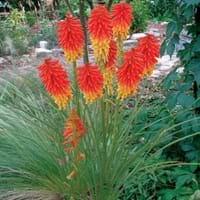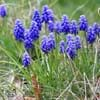Life Span
Perennial
Annual
Origin
Hybrid origin
Middle Africa
Types
Not Available
Not Available
Number of Varieties
Not Available
Habitat
Damp Places, Marshy ground
Moist Soils
USDA Hardiness Zone
6-9
3-9
Sunset Zone
2a, 2b, 3a, 3b, 4, 5, 6, 7, 8, 9, 14, 15, 16, 17, 18, 19, 20, 21, 22, 23, 24
H1, H2, 1a, 1b, 2a, 2b, 3a, 3b, 4, 5, 6, 7, 8, 9, 10, 11, 12, 13, 14, 15, 16, 17, 19, 20, 21, 22, 23, 24
Habit
Clump-Forming
Upright/Erect
Flower Color
Yellow, Red, Orange, Pink
White
Flower Color Modifier
Bicolor
Bicolor
Fruit Color
Not Available
Orange, Gold, Orange Red
Leaf Color in Spring
Green, Blue Green
Green, Light Green
Leaf Color in Summer
Green, Blue Green
Green, Light Green
Leaf Color in Fall
Blue Green, Gray Green, Light Yellow
Green, Yellow green
Leaf Color in Winter
Light Green
Light Green
Leaf Shape
Linear
imparipinnate
Plant Season
Spring, Summer
Summer, Fall
Sunlight
Full Sun, Partial Sun
Full Sun, Partial Sun
Type of Soil
Clay, Loam, Sand
Loam
The pH of Soil
Acidic, Neutral
Acidic, Neutral
Soil Drainage
Well drained
Well drained
Bloom Time
Early Summer, Summer
Summer
Tolerances
Drought
Drought
Where to Plant?
Container, Ground
Ground
How to Plant?
Divison, Seedlings
Seedlings
Plant Maintenance
Medium
Medium
Watering Requirements
Needs more water during establishment, Water Deeply, Water in morning to avoid prompting diseases, Water in the early morning hours
Requires a lot of watering
In Summer
Lots of watering
Lots of watering
In Spring
Moderate
Moderate
In Winter
Average Water
Average Water
Soil pH
Acidic, Neutral
Neutral
Soil Type
Clay, Loam, Sand
Clay
Soil Drainage Capacity
Well drained
Rich
Sun Exposure
Full Sun, Partial Sun
Full Sun
Pruning
Cut or pinch the stems, Remove damaged leaves, Remove dead branches, Remove dead leaves
Remove damaged leaves, Remove dead branches, Remove dead leaves
Fertilizers
All-Purpose Liquid Fertilizer, Apply N-P-K
All-Purpose Liquid Fertilizer
Pests and Diseases
Onion thrips, Red blotch, Root rot
Red blotch
Plant Tolerance
Drought, Moisture
Drought
Flowers
Yes
Insignificant
Flower Petal Number
Single
Single
Foliage Texture
Coarse
Coarse
Foliage Sheen
Matte
Matte
Allergy
Not Available
Not Available
Aesthetic Uses
Borders, Cottage Garden, Ground Cover
Not Available
Beauty Benefits
Not Available
Not Available
Environmental Uses
Air purification
Air purification
Medicinal Uses
Not Available
Anti-oxidant, Digestive, Fiber, Minerals
Part of Plant Used
Not Available
Flowers, Fruits, Leaves, Seeds
Other Uses
Not Available
Animal Feed, For making oil, Used as a nutritious food item
Used As Indoor Plant
No
No
Used As Outdoor Plant
Yes
Yes
Garden Design
Container, Cutflower, Mixed Border, Rock Garden, Wall
Fruit Tree
Botanical Name
KNIPHOFIA 'Border Ballet'
SOLANUM integrifolium
Common Name
Tritoma, Wisley Blue Spring Starflower, Wisley Blue Springstar
Chinese Scarlet Eggplant, Pumpkin Tree, Turkish Eggplant, Turkish Orange Eggplant
In Hindi
Tritoma
कद्दू पेड़
In German
Tritoma
Kürbis-Baum
In French
Tritoma
arbre de citrouille
In Spanish
tritoma
árbol de calabaza
In Greek
tritoma
δέντρο κολοκύθας
In Portuguese
Tritoma
árvore abóbora
In Polish
Tritoma
drzewa dyni
In Latin
Trytoma
PEPO ligno
Phylum
Tracheophyta
Magnoliophyta
Class
Magnoliopsida
Magnoliopsida
Order
Asparagales
Scrophulariales
Family
Liliaceae
Oleaceae
Clade
Angiosperms, Monocots
Not Available
Tribe
Not Available
Not Available
Subfamily
Not Available
Not Available
Importance of Tritoma and Pumpkin Tree
Want to have the most appropriate plant for your garden? You might want to know the importance of Tritoma and Pumpkin Tree. Basically, these two plants vary in many aspects. Compare Tritoma and Pumpkin Tree as they differ in many characteristics such as their life, care, benefits, facts, etc. Every gardener must at least have the slightest clue about the plants he wants to plant in his garden. Compare their benefits, which differ in many ways like facts and uses. The medicinal use of Tritoma is Not Available whereas of Pumpkin Tree is Anti-oxidant, Digestive, Fiber and Minerals. Tritoma has beauty benefits as follows: Not Available while Pumpkin Tree has beauty benefits as follows: Not Available.
Compare Facts of Tritoma vs Pumpkin Tree
How to choose the best garden plant for your garden depending upon its facts? Here garden plant comparison will help you to solve this query. Compare the facts of Tritoma vs Pumpkin Tree and know which one to choose. As garden plants have benefits and other uses, allergy is also a major drawback of plants for some people. Allergic reactions of Tritoma are Not Available whereas of Pumpkin Tree have Not Available respectively. Having a fruit bearing plant in your garden can be a plus point of your garden. Tritoma has no showy fruits and Pumpkin Tree has showy fruits. Also Tritoma is flowering and Pumpkin Tree is not flowering . You can compare Tritoma and Pumpkin Tree facts and facts of other plants too.





